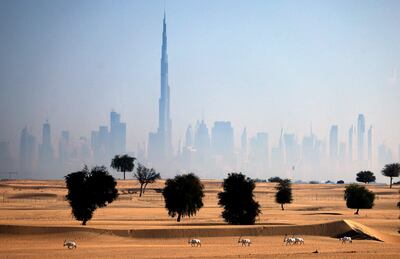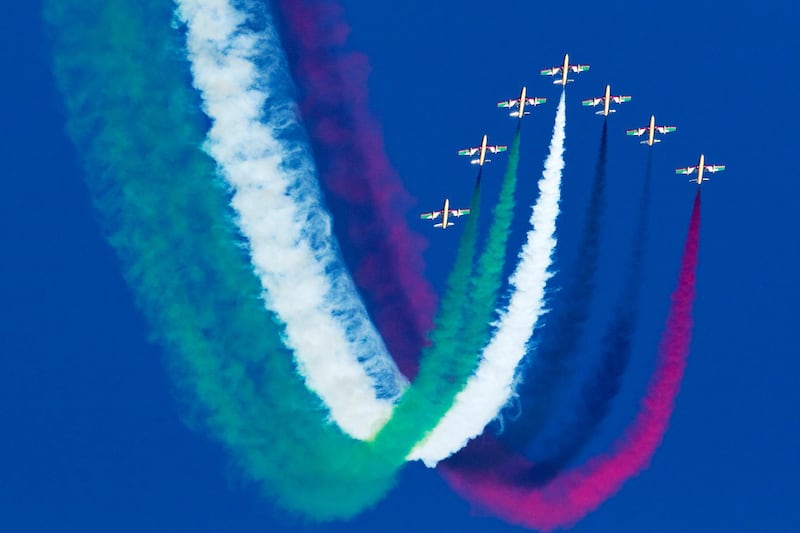In the world of finance, a J Curve is a trendline in which an initial loss is immediately followed by a dramatic gain. I often think of this phenomenon when I think of the formation of the United Arab Emirates. Back in 1968 when the founding fathers of the country came together to discuss the establishment of the union, they understood that in order for this proposed federation to work they would each have to compromise: an initial loss for a dramatic gain. For instance, prior to the federation some emirates enjoyed close relations with certain countries in the region while others viewed these countries with a degree of suspicion. Within weeks, their foreign policies had to be aligned and, as in other situations, they agreed to compromise.
It is hard to believe how far the UAE has come. As a child, I recall the goals of the union, the foremost of which were a good standard of living, the eradication of illiteracy and even the planting of trees (Iraq was the standard for us). Fifty years on, our goals are astronomical, both figuratively and literally.
Even my own family's journey mirrors that of the UAE. Today I sit in my office at Harvard Kennedy School as the Fall 2021 Kuwait Foundation Visiting Scholar, aware of having been born to a woman, Nama bint Majid, who was the first Emirati teacher in a formal education system (along with her lifelong friend Ms Amna Al Hajeri) at a time when education was scarce throughout the Gulf. In various walks of life, the UAE seems to have taken giant leaps, whether it has been in the growing number of women ambassadors, parliamentarians (albeit not universally elected) and judges, the numerous cultural and educational institutions or the diversified and vibrant economy.
I also recognise how lucky I was to have come of age during the era of Sheikh Zayed, with all the promise it held. We really did feel we had a father figure in him. But what next for this federation that is today 50 years young? At the recent Abu Dhabi Strategic Debate, Dr Anwar Gargash, diplomatic adviser to the President, Sheikh Khalifa, said that the UAE spends more time thinking about what the next 50 years will look like than it does thinking about the past 50 years. Perhaps the UAE’s Vision 2071 is a manifestation of this forward thinking. However, I do hope that the younger generation will look both forward and back, and learn the lessons of the past, including the hardships and the compromises that resulted in a greater good. My personal wish going forward is to see a more vibrant press with an elevated public discourse . Perhaps it is due to age, or maybe experience, but I have come to concur with the "gradual course" the UAE has promised, seeing as the trajectory is positive.

Since 2017, I, a person from a country whose oldest university was only established in 1976, have been fortunate to teach at a number of American higher-education institutions, and I have come to recognise even more than I did before that knowledge is the ultimate wealth. At these educational institutions, I try to be a good ambassador for the UAE and reflect its values of openness and Arab hospitality. This country has given me so much, and yet I still want more for it.
In many cases the students I encounter are headhunted by prestigious firms even while they are still at university, not for what they have achieved in their professional lives but for the potential that they hold. This is what the UAE's next 50 years could be about: not only identifying people who are already successful and enticing them to relocate to the country, but also recognising the potential of those who could be and would be the dreamers of the future. The introduction of golden visas for top-performing high school students is a welcome step in that direction.
Today, the UAE is more than merely a country of 10 million inhabitants. It has transformed, thanks to its own people and the many millions of non-citizens who have worked here over the past five decades, into a vibrant land of opportunities and the gateway to the region and beyond. It is now the standard by which success is measured throughout the region and the country that others try to emulate, which is perhaps the greatest compliment that can be paid to it. It is no small feat, and we all have much to be proud of. We must also not allow ourselves to be complacent, as competition abounds from near and far, and, as in any race, all eyes are set towards those who are in the lead.
The next 50 years will likely be more challenging, as we try to balance between embracing the world and safeguarding our identity, between growth and sustainability and between freedoms and security. But we must have faith and learn to compromise. That is what our own history teaches us: an initial loss for a dramatic gain.





